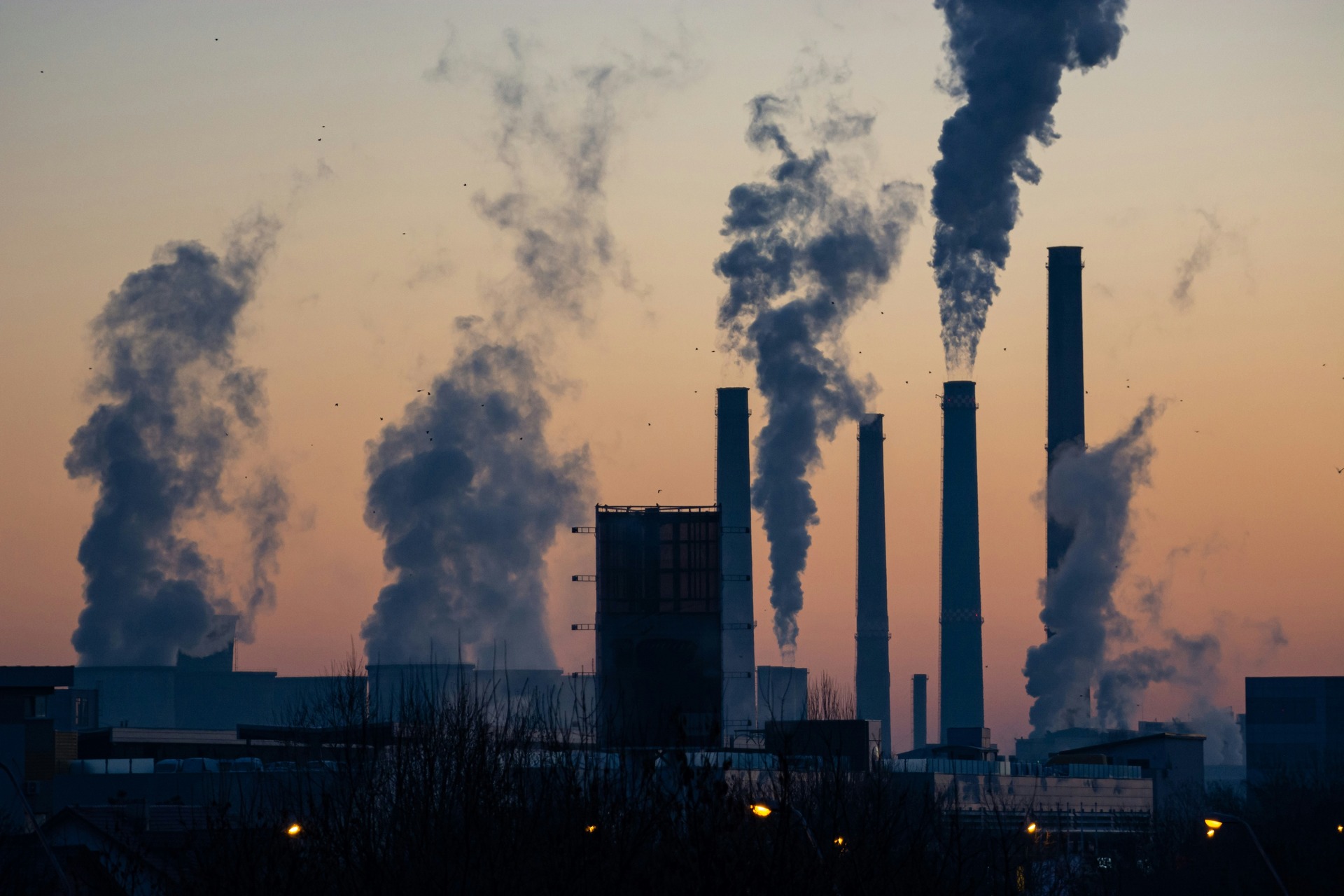
Pollution Control Measures Every Industry Should Adopt
May 2, 2024 - Emily Newton
Revolutionized is reader-supported. When you buy through links on our site, we may earn an affiliate commision. Learn more here.
Pollution control is essential to reduce industrial pollution’s environmental and public health impact. As part of the industry, adopting effective measures can prevent harmful emissions, chemical waste and runoff from damaging local ecosystems and contaminating water sources.
Understanding and managing the sources of these pollutants across various sectors helps mitigate adverse effects. It promotes a safer and cleaner environment for communities and biodiversity.
Pollution Types and Sources
Primary pollutants in your industry — including air, water, soil and noise pollution — pose severe environmental and public health risks. Ambient and household air pollution alone is associated with 6.7 million premature deaths annually. Common sources of these pollutants vary.
For example, factories release emissions and particulates into the air, wastewater discharges pollute rivers and lakes, improper waste disposal contaminates the soil and excessive machine noise disrupts local habitats. These pollutants can lead to chronic health conditions in humans, reduce biodiversity and degrade natural resources. It underscores your need to implement rigorous pollution control strategies in your operations.
Regulatory Framework for Pollution Control
Understanding significant regulations like the Pollution Prevention Act is crucial as you navigate your industry’s environmental responsibilities. This act specifically aims to reduce the release of hazardous substances into the environment before they undergo recycling, treatment or disposal.
Compliance with such regulations is not only a legal obligation but also an ethical one. It ensures your operations don’t harm the environment or public health. The impact of global agreements and local laws further shapes your practices. These regulations make it essential to stay informed and compliant to maintain good standing in the worldwide marketplace and uphold your commitment to sustainability.
Best Practices in Air Pollution Control
Adopting technologies like scrubbers and filters is vital to effectively reducing emissions in your industry. Scrubbers work by removing pollutants from gas streams — primarily in smokestack emissions — using liquid to wash away contaminants.
Meanwhile, filters capture particulates and pollutants directly from exhaust systems, ensuring they don’t enter the atmosphere. Incorporating these technologies minimizes your environmental impact and aligns with stricter emission standards.
Implementing these technologies has significantly improved air quality in manufacturing and chemical production industries. For example, manufacturing plants using electrostatic precipitators have successfully trapped fly ash and other particulates before they can pollute the air.
Similarly, chemical plants utilizing gas scrubbers have effectively reduced harmful emissions by neutralizing acidic gases like sulfur dioxide and ammonia. These examples illustrate how proactive emission control can substantially decrease environmental pollution and enhance compliance with environmental regulations.
Water Pollution Mitigation Strategies
Treating industrial wastewater involves several techniques, including biological and chemical treatments. Biological treatment uses microorganisms to decompose organic matter in wastewater. In contrast, chemical treatment involves adding reagents that react with contaminants to make them harmless.
These methods minimize the environmental impact of your wastewater before it’s released back into waterways. Additionally, experts found that adopting air-stripping to remove nitrogen from wastewater emits 5 to 10 times less greenhouse gases than conventional methods. It offers a more sustainable option for your operations.
Implementing best practices for reducing runoff and managing waste is crucial. It includes setting up containment systems to prevent accidental leaks and designing landscapes to filter runoff before it reaches water bodies.
Moreover, effective water recycling and reuse practices in industries — such as using treated wastewater for cooling processes or irrigation — conserve water and reduce the demand for local water resources. These strategies ensure your sector contributes positively to water sustainability while maintaining operational efficiency.
Managing Soil and Waste Pollution
Minimizing hazardous waste in your operations involves implementing reduction strategies and ensuring safe disposal techniques. Start by optimizing your production processes to use fewer dangerous materials and substitute them with safer alternatives whenever possible.
Additionally, routine maintenance and proper equipment calibration can prevent leaks and spills. For the waste organizations inevitably produce, follow strict protocols for containment and disposal to prevent environmental contamination.
Notably, in 2018, paper and paperboard made up over 23% of municipal solid waste in the U.S. It highlights the need for industries to manage waste responsibly to avoid adding to this significant statistic.
Proper waste management plans and responsible landfill use are fundamental to sustainable business practices. Ensure your waste management plans are comprehensive and compliant with local and international regulations to mitigate the impacts of your waste on the environment.
Innovatively, converting waste to energy is an effective strategy many industries adopt. This approach helps manage waste and contributes to energy production. It turns a potential environmental liability into a valuable resource. By focusing on these practices, you can lead your industry toward a more sustainable future while maintaining regulatory compliance and enhancing your corporate image.
Implementing a Pollution Control Plan
A structured approach is imperative to manage and reduce pollution output. Here are a few steps that can help you start:
- Assess pollution output: Conduct a thorough audit of your current operations. Identify all sources of emissions, effluents and waste, from production lines to transportation.
- Identify critical control points: Pinpoint areas where interventions can have the most significant impact. It might include points of high emissions or significant waste generation within your processes.
- Set realistic goals: Based on your assessment, establish attainable pollution reduction targets that align with industry standards and regulatory requirements.
- Track progress: Implement monitoring systems to measure the effectiveness of your pollution control measures regularly. Adjust strategies as necessary to ensure you are on track to meet your goals.
- Employee training: Conduct regular training sessions to educate your staff on their roles in pollution control and the importance of their involvement.
- Engagement in pollution reduction: Foster a culture of sustainability by encouraging employee input in finding solutions and innovations in pollution control.
Following these steps ensures a comprehensive approach to managing environmental impacts. It sets your business up for a more sustainable operational framework.
Cutting-Edge Innovations in Pollution Control
In enhancing pollution control, embracing new technologies and innovations is pivotal. AI and the IoT are revolutionizing how industries monitor and manage environmental impacts. These technologies enable smarter, more efficient control processes that can adapt in real time to changing conditions.
For example, the UNEP’s GEMS Air Pollution Monitoring platform utilizes AI to provide instant insights into air quality impacts. It empowers you with data to make informed decisions swiftly. Staying ahead with these advancements boosts your compliance and sets new standards in environmental responsibility within your industry.
Leading by Example in Pollution Control and Innovation
Adopting advanced pollution control measures is crucial to enhancing environmental sustainability and community health. Industries must lead by example and continuously innovate to set a positive precedent for others.
Revolutionized is reader-supported. When you buy through links on our site, we may earn an affiliate commision. Learn more here.
Author
Emily Newton
Emily Newton is a technology and industrial journalist and the Editor in Chief of Revolutionized. She manages the sites publishing schedule, SEO optimization and content strategy. Emily enjoys writing and researching articles about how technology is changing every industry. When she isn't working, Emily enjoys playing video games or curling up with a good book.




